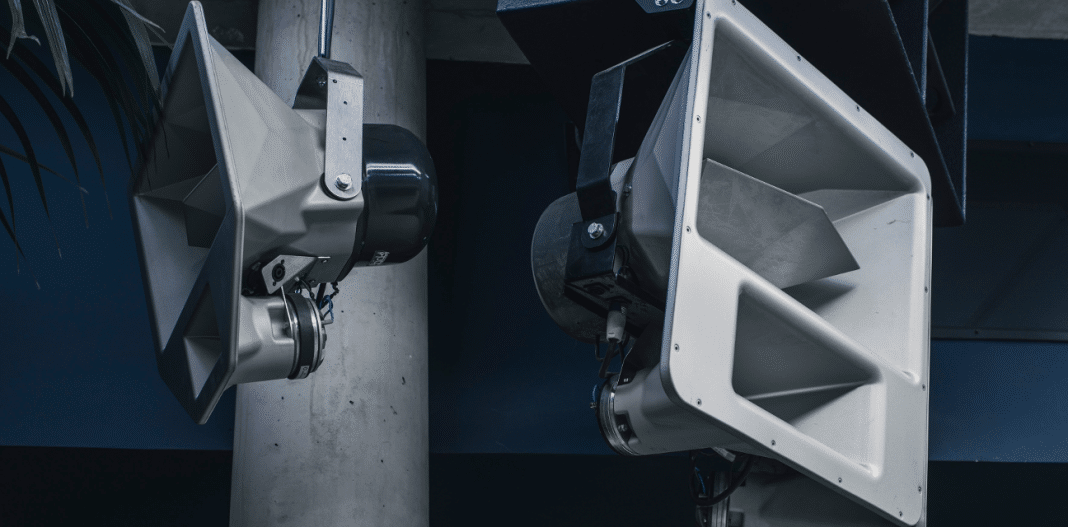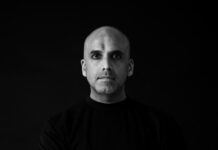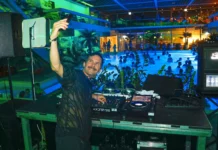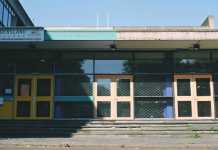Meanwhile we relocated in the living room of the Andrews. A cozy hippie loft, at a stone’s throw from the workshop. This circumstance seems exemplary for the relaxed Andrews work philosophy: Here nobody is wearing a shirt or a suit, a lot of the employees are siblings. An interview appointment at Funktion-One feels more like a visit to the family than an international operating tech company.
8 years ago, according to the last Groove article, you had 16 employees. How many are there today?
17. But is it possible that we barely increased? Ann? (His wife answered from the kitchen :“That could be true. We probably used to be overstaffed and lazy eight years ago!”) It was never about building an empire, we never aimed at becoming the biggest but at becoming the best. We still run this place with the enthusiasm of music fans.
How do you manage to meet the big demand with such a small workforce?
(Ann joins us at the couch table.)
When looking at the big demand it seems natural to think that establishing a 10-year plan and moving to larger premises is preferable. But those new structures would have to be extended and maintained on a long term. That would be unnecessarily risky because we don’t even want to move from here – even if we reach our limit when it comes to our capacity. We hire friendly companies in the area for the manufacture of our smaller products, we send them the individual parts and give them the orders and they deliver the end product back to us. Everybody can benefit from this. I’ve worked in big companies, the bigger the company the greater the greed. I relate more to this Buddhistic wisdom: You must see the value in a transaction. It’s not about largest profit, but about the vibe. That has always been my philosophy.
For four decades you’ve been working on making speakers better. Is there still improvement in this area?
Nowadays vibrating coil forms can be made out of materials with a higher temperature resistance. Thereby it is possible to chase more electricity through it. However, in principle it is fair to say that paper is still the best material for a speaker’s membrane. Insofar, speakers today barely differ from speakers made in the 30s, apart from the fact that they were less powerful.
Does it mean that modern technology brings little improvement?
Modern technology plays a role in the digital area. Equalizing gets cheaper. But we are focused on the speaker itself. And for this it’s mainly about the choice of materials and the right adjustment of the speaker chassis. All are cone-shaped, some straight, some crooked, all have a special sound. To find out which one is the best, in there lies the challenge.
Are there still challenges for you then?
Of course. When you finish a new prototype, you’re extremely happy. But when you start working with it for a couple of months, you’ll start thinking about what could be improved.
At this point the doorbell rings. It’s Gerald Simpson, aka British acid-house legend A Guy Called Gerald. He comes by to test his new laptop-live-set on Tony’s Surround-sound system in the workshop. A trial of sorts for the Funktion-One system he’ll be playing over at Glastonbury Festival in June. While an employee of Tony is connecting the sound card of the musician with the system, Gerald takes the time to explain his fascination with Funktion-One: 15 years ago he played for the first time on one of Tony’s sound systems in London. “I turned the volume down and the bass up, nonetheless I was able to hear the mids and highs extremely clear. I was excited”, he says. “Ever since I’ve been convinced: When I’m in a club equipped with Funktion-One, I don’t have to worry about the sound”. Tony listens and smiles. So satisfied that you would actually believe that such a compliment is worth more for him than any transaction.
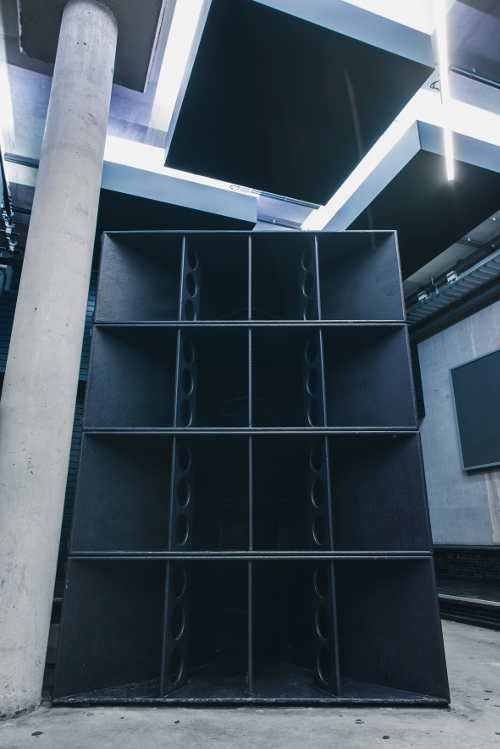
Showcase: an interview with Bróna Lynch of Shelter (Amsterdam)
Last October a new addition to the club scene in Amsterdam opened its doors: Shelter. The sound system comes from Funktion-One. After a brief period of renting the system, the team behind the club became fully convinced that this was the system for them, and soon made the step towards fully purchasing it. Shelter’s sound engineer Bróna Lynch explains why their choice of sound system was the right one.
What were your goals regarding the right sound for Shelter?
The idea was to deviate from the usual frontal sound used in many clubs and instead to create a “sound bubble” distributed over the whole dance floor. I wanted to use the space more, for our customers to have as good an audio experience at the back of the dance floor as at the front.
What about the volume?
We want to maintain the governmental regulation of 103dB[A]. Not necessarily because of the neighbours, but to protect our visitor’s ears! That was especially important to us because of Shelter’s 24 hour license. We tend to be open for longer than 7 or 8 hours at times, The music should be good and sound full, without the dancer having to endure a ringing in the ear the next day.
What made you choose Funktion-One?
We were completely open-minded about what brand the system would be. I had a clear directive in mind for what I envisaged for the final result, the question was what and who would help us get there and achieve this. So a long story short we sent this directive out to a number of manufacturers and suppliers of sound systems. THINK AV (the Dutch Funktion-One supplier) was the one who really understood and embraced the directive. There was a meeting of minds you could say. They were extremely open about the project and an absolute pleasure to work with. There was no doubt in my mind if we went with them that we could achieve our goal and for the large part I can say we have. There’s always more to do, but we are very happy with the result.
